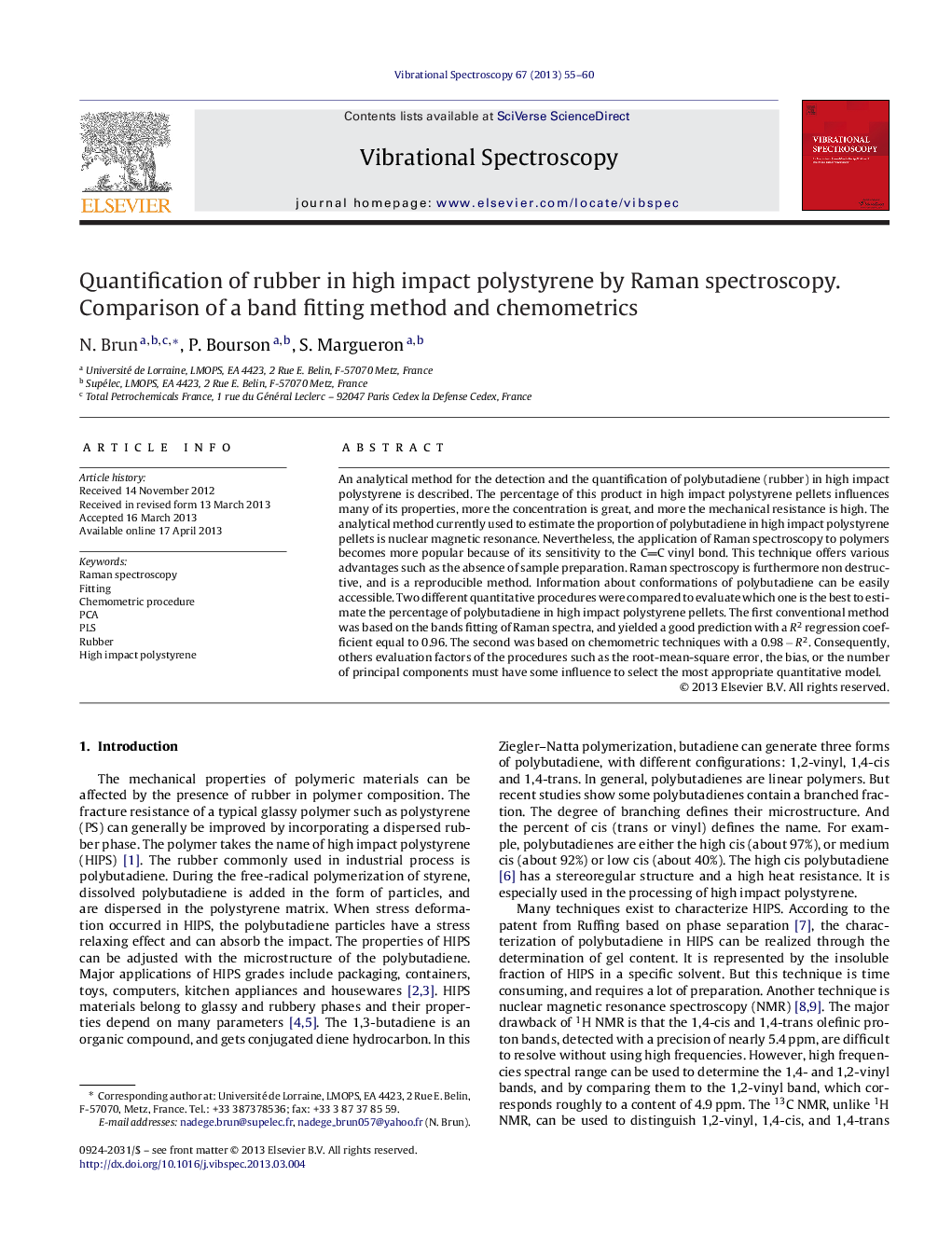| Article ID | Journal | Published Year | Pages | File Type |
|---|---|---|---|---|
| 1250364 | Vibrational Spectroscopy | 2013 | 6 Pages |
•Quantification of polybutadiene amount in high impact polystyrene pellets.•Comparison of two procedures: conventional curve fitting procedure and chemometrics procedure.•Performance by robustness tests.•Discussion about the spectral correction for the determination of the quantity of polybutadiene in high impact polystyrene pellets.
An analytical method for the detection and the quantification of polybutadiene (rubber) in high impact polystyrene is described. The percentage of this product in high impact polystyrene pellets influences many of its properties, more the concentration is great, and more the mechanical resistance is high. The analytical method currently used to estimate the proportion of polybutadiene in high impact polystyrene pellets is nuclear magnetic resonance. Nevertheless, the application of Raman spectroscopy to polymers becomes more popular because of its sensitivity to the CC vinyl bond. This technique offers various advantages such as the absence of sample preparation. Raman spectroscopy is furthermore non destructive, and is a reproducible method. Information about conformations of polybutadiene can be easily accessible. Two different quantitative procedures were compared to evaluate which one is the best to estimate the percentage of polybutadiene in high impact polystyrene pellets. The first conventional method was based on the bands fitting of Raman spectra, and yielded a good prediction with a R2 regression coefficient equal to 0.96. The second was based on chemometric techniques with a 0.98 − R2. Consequently, others evaluation factors of the procedures such as the root-mean-square error, the bias, or the number of principal components must have some influence to select the most appropriate quantitative model.
